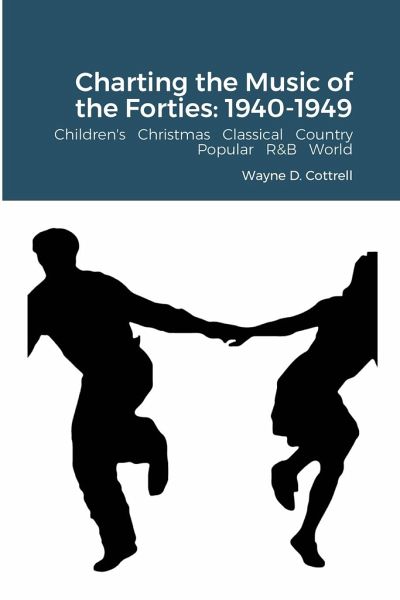
Charting the Music of the Forties
1940-1949: Children's Christmas Classical Country Popular R&B World
Versandkostenfrei!
Versandfertig in 1-2 Wochen
69,99 €
inkl. MwSt.

PAYBACK Punkte
35 °P sammeln!
What is the number 17 popular single of 1940-44? "Maria Elena" by Jimmy Dorsey & Bob Eberly. The title refers to Mexico's First Lady during the late 1920s. By no means forgotten, there has been a new hit version of the song during nearly each decade since. The #17 pop single of 1945-49? "To Each His Own" by Eddy Howard. The song was written for the same-titled 1946 film, but was never used. No matter: the song became a number one hit, and the film -- without the song -- reaped an Academy Award for Best Actress for Olivia de Haviland. How about the #17 Country single of 1945-1949? "You Two-Time...
What is the number 17 popular single of 1940-44? "Maria Elena" by Jimmy Dorsey & Bob Eberly. The title refers to Mexico's First Lady during the late 1920s. By no means forgotten, there has been a new hit version of the song during nearly each decade since. The #17 pop single of 1945-49? "To Each His Own" by Eddy Howard. The song was written for the same-titled 1946 film, but was never used. No matter: the song became a number one hit, and the film -- without the song -- reaped an Academy Award for Best Actress for Olivia de Haviland. How about the #17 Country single of 1945-1949? "You Two-Timed Me One Time Too Often" by Tex Ritter, in classic Country lingo.. The #17 R&B single of 1940-1944? "Mr. Five-by-Five" by Freddie Slack & Ella Mae Morse. Ms Morse was, perhaps, the first white female singer with an R&B hit. The #17 album? "Lombardoland" (by Guy Lombardo, who was, by then, 20 years into his music career). The #17 Classical single is "The Whiffenpoof Song" by Robert Merrill & Russell Case. The traditional college song was introduced at Yale University in 1909. Yet, the Classical singles chart no longer exists. The #17 Classical composition is Leroy Anderson's "Sleigh Ride," which has since become one of the most recorded Christmas songs. The singles and albums at the higher & lower positions, for these genres and for Children's, Christmas, Classical (albums and compositions), and World music (Australia and the U.K.), are featured in the book. The compilations are based on scores calculated from the weekly music chart positions of the various recordings (or polls, in the case of Classical compositions). The charts include those found in "Billboard" and "Cash Box" magazines, "Your Hit Parade," and other resources. There are also short biographies on notable artists and composers, covering the decade of the 1940s. The book is a chronicle of our musical past.




